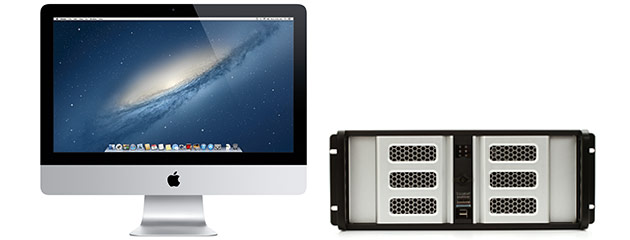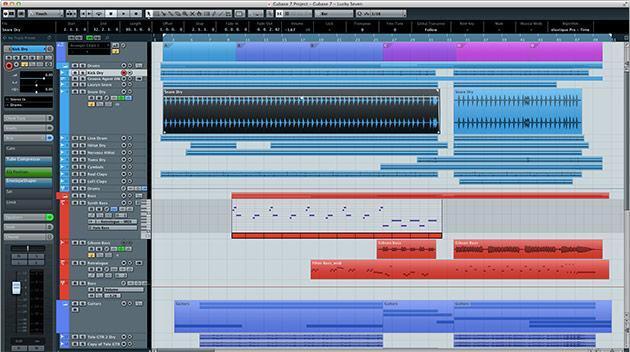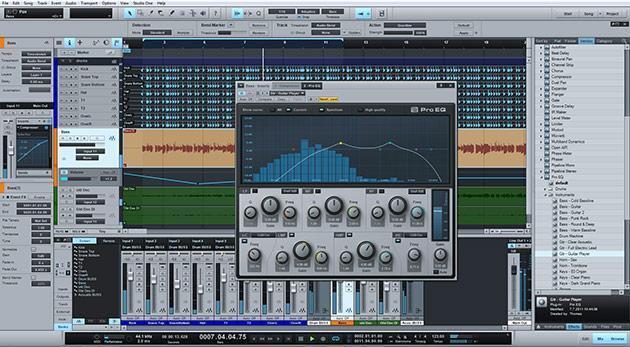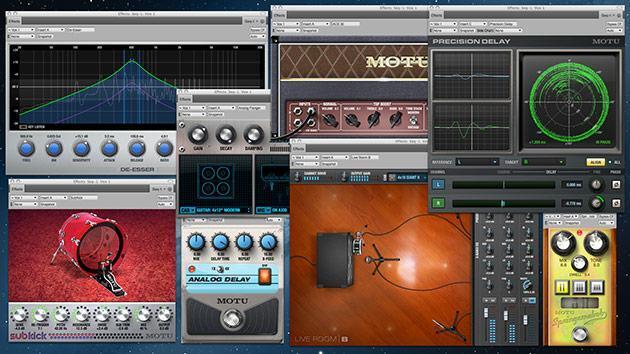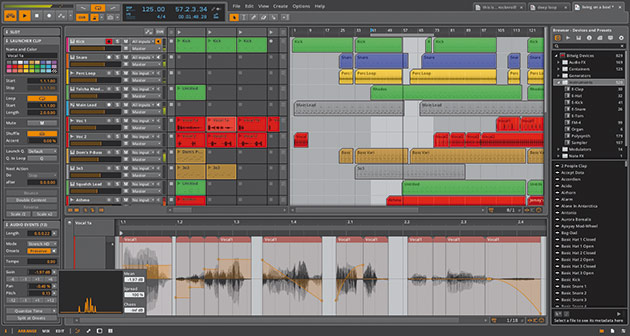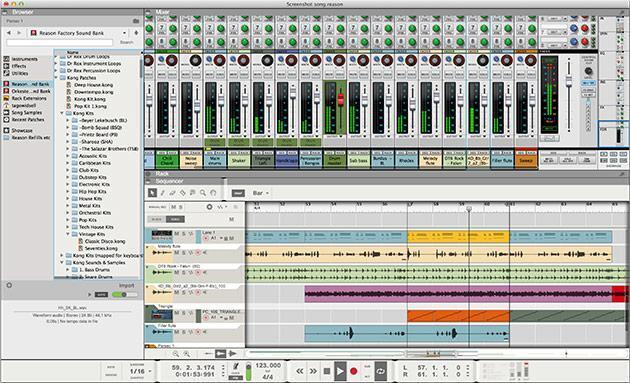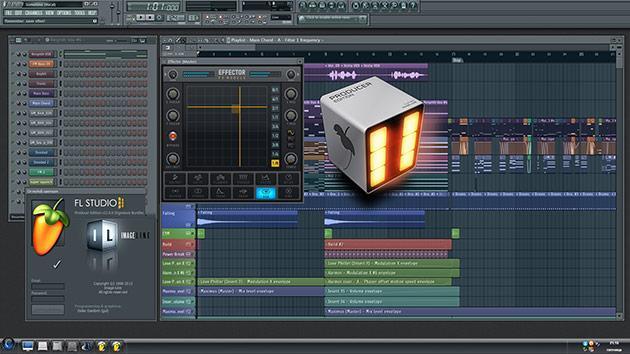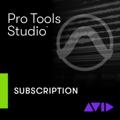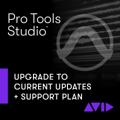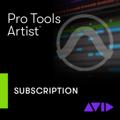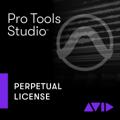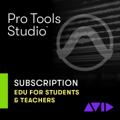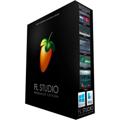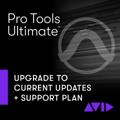How to Choose a DAW Program
Whether you’re recording live musicians or producing music in the box, you’re going to need the right DAW software for the job. A great, full-featured DAW needs to include a few key elements. All good DAWs include multitrack audio recording and MIDI (virtual instrument) sequencing, as well as mixing capabilities and plug-in processor hosting. A truly great DAW provides you with all the tracks you need, a workflow that meshes with your style, and plenty of useful content.
For instance, if you’re mostly interested in multitracking bands, you’ll want to stick to a DAW that’s geared toward audio recording. A clean workflow that lets you take in information about multiple tracks at a glance is a must, and a suite of bundled compressors, EQs, and other plug-in processors is a serious bonus. If you’re planning on writing a lot of music in the box, then your focus should be on creative tools, MIDI- and virtual-instrument-based workflows, and bundled soft synths instead. If you don’t know which one is best for you, then this guide is the right place to start.
What’s a DAW?
DAW is an acronym for Digital Audio Workstation, and it’s where you record, edit, mix, and often master your music or audio. Technically, it’s a complete ecosystem that includes everything from your outboard gear and audio interface to your computer and any software you’re running. But most of the time, when someone talks about a DAW, they’re talking about music production software. That’s what we’ll focus on in the rest of this guide.
For now, we’ll briefly go over the other central parts of your complete DAW. For starters, there’s your computer. Your computer dictates a lot of what you can hope to do. Your CPU speed will determine things like how many plug-ins you can run, while your memory plays a huge part in recording audio and playing sample-based virtual instruments. And you can’t forget about disk speed, which decides how many tracks you can record at once, among other things.
On the hardware side, the biggest consideration is going to be your audio interface. Before all else, your interface’s inputs limit how many tracks you can record at once. It also limits the resolution at which you can record and how many outputs you can send. In most cases (at least in the beginning), your interface is also your main or only source of microphone preamps, monitor management, and headphone distribution. Choose wisely and always plan for future expansion.
Beyond studio monitors, other major parts of your total DAW will vary. If you’re recording, then you’re looking at microphones, preamps, outboard processors, and more. Composers and music producers will need MIDI controllers, whereas many mix engineers demand the hands-on feel of a control surface. You can read all about these in other Sweetwater guides.
The Mac vs. PC Debate
The Mac vs PC debate has raged since way back when the systems were entirely different, and software was far more likely to be platform dependent. The fact is, macOS and Windows are about perfectly matched for media production these days, and virtually all of the same software that runs on one will run on the other. There’s no reason to replace your computer or switch from the operating system you already know and love to support the music-making software you want to use. Bottom line: don’t sell yourself short. Use the OS you like, and you’ll find all the tools you need, including the DAW that best fits your needs.
The Audio Circulatory System
If you want to dive into audio interfaces, then check out our inclusive Audio Interface Buying Guide. For now, let’s recap what to look for in an audio interface.
- Channel count — This determines how many individual tracks you can record and play back at once.
- Microphone preamps — Unless you buy external preamps, this sets how many mics you can use.
- Resolution — Most professionals record in 24-bit/48kHz or 24-bit/96kHz.
- Headphone outputs — Two or more independent headphone outs are great for collaboration.
- Connection type — Make sure your interface uses a connection type (USB 3, Thunderbolt, etc.) that your computer supports.
Comparing DAW Software
Avid Pro Tools
Avid Pro Tools has reigned at the top of the DAW food chain for nearly three decades. Pro Tools is wonderful for composing music and integrating soft synths, and it’s considered to be the quintessential recording DAW. It’s arranged into two windows, a mix window and an edit window, to keep everything streamlined and straightforward. All told, Pro Tools is remarkably simple to use and limitlessly powerful.
What you need to know about Pro Tools:
- Designed to record massive amounts of simultaneous audio
- Latency management and I/O capability are handled very well
- Uses unique plug-in format, AAX
- Software available in three levels: Pro Tools First (free), Pro Tools, and Pro Tools | HD (supports HDX hardware)
Consider Pro Tools if:
- You plan to record a lot of live audio
- You need compatibility with professional studios
Steinberg Cubase/Nuendo
First released as a MIDI-only sequencer in 1989, Cubase is one of the oldest DAWs still in production. It was originally designed to run on the Atari ST platform (if you know what that is, you’re dating yourself). In 1992, Cubase began to support audio in addition to MIDI and was rebranded as “Cubase Audio.” In 1996, Steinberg developed the VST (Virtual Studio Technology) plug-in standard, which is arguably the most popular plug-in format in the world (the Internet is teeming with free VSTs). Today, Cubase enjoys a loyal and devoted following.
Nuendo was originally released in 2000. While Cubase is intended as a music composition tool, Nuendo is optimized for use in a post-production environment. Editors, film mixers, game sound designers, as well as recording engineers around the world rely on the flexibility and industry openness that Nuendo provides.
What you need to know about Cubase/Nuendo:
- Works especially well with hardware and software synthesizers
- Includes numerous virtual instruments and VST plug-ins
- A plethora of free VST plug-ins are available on the Internet
Consider Cubase if:
- You work with electronic music such as hip-hop, pop, or EDM
- You’re a professional composer or songwriter
Consider Nuendo if:
- You work in film sound or other post-production roles
- You’re a video game sound designer
PreSonus Studio One
Released in 2009, Studio One quickly became one of the most popular DAW applications ever produced and gained notable, professional-level users. Studio One makes extensive use of drag-and-drop functionality, making for an extremely fast workflow. Studio One is also widely praised for its integrated mastering capabilities. On top of that, Studio One ships with a free jambalaya recipe (we’ve sampled the jambalaya here at Sweetwater, and it’s very yummy).
What you need to know about Studio One:
- Drag-and-drop functionality is quick, easy, and fun
- One of the most modern production environments available
- Integrated mastering capabilities are unparalleled
- Available in two versions: Studio One Artist and Studio One Professional
Consider Studio One if:
- You want professional quality combined with ease of use
- You’re looking for a highly versatile production environment
MOTU Digital Performer
MOTU’s Professional Composer, in 1984, was one of the first applications available for the Apple Macintosh. In 1985, the software evolved into “Performer,” one of the first sequencers designed to work with the emerging MIDI protocol. In 1990, the software was rebranded as “Digital Performer” due to the inclusion of digital audio support. Today, Digital Performer works on both Windows PC and Mac computers, and it maintains a loyal fan base as a result of its excellent scoring integration and unparalleled MIDI environment.
What you need to know about Digital Performer:
- MIDI environment surpasses most other DAW software
- Has very powerful and intuitive scoring integration
- Supports both AU and VST plug-ins
- Extremely customizable layout lets you define your workflow
Consider Digital Performer if:
- You want deep MIDI functionality
- You’re a film composer who wants top-notch scoring integration
Bitwig Studio
Released in 2014, Bitwig Studio generated an enormous level of buzz prior to its release. Although similar to Ableton Live, it has its own strengths and personality. One of its coolest features is its ridiculously fluid workflow, which combines both linear and nonlinear sequencing. This unique workflow lets you create loops and effortlessly drop them into your arrangements. Bitwig Studio also gives you access to insanely tweaky automation for just about every parameter of its built-in instruments. You can even automate individual notes!
What you need to know about Bitwig Studio:
- Extremely fluid workflow for creating audio loops
- Unparalleled automation and modulation features
- Hybrid of a linear and nonlinear workflow
- One of the few DAW applications available for Linux
Consider Bitwig Studio if:
- You want an inspiring and creative workflow
- You like to tweak beats and synths
Reason Studios Reason
Reason, first released in 2000, is unique in that it emulates a studio rack into which you can insert virtual devices such as instruments, effect processors, and mixers. At the time of its inception, Reason couldn’t actually record audio. In 2009, Propellerhead (the company changed its name to Reason Studios in 2019) released its own DAW software called Record, which quickly integrated into Reason. Today, Reason is a powerful DAW with tons of amazing tools, including virtual instruments, drum machines, processors, and more. It supports standard plug-ins, special Rack Extensions, and much more.
What you need to know about Reason:
- Utilizes a unique virtual rack paradigm
- Includes plenty of built-in synths and effects
- Support for third-party Rack Extensions and plug-ins
- Available in three versions: Reason Intro, Reason Standard, and Reason Suite
Consider Reason if:
- You want intuitive drag-and-drop functionality
- You like to tweak synths and effects
- If you enjoy the feel of using virtual hardware
Magic ACID Pro Next
Released by Sonic Foundry in 1998, ACID was originally a loop-based sampler. It became extremely popular with composers, producers, and DJs due to the ease with which beats, music textures, and loop-based compositions could be created. In 2006, ACID gained audio recording capabilities, as well as MIDI and VST plug-in support, making it fully functional DAW software. Today, ACID Pro Next is one of the few remaining DAW applications only available on Windows PCs.
What you need to know about ACID Pro:
- Easy-to-use loop-based sequencer
- Includes a large collection of sample loops and MIDI files
- Available in two versions: ACID Pro Next and ACID Pro Next Suite
- Windows PC only
Consider ACID Pro if:
- You want to create compositions quickly and easily
- You work extensively with loops
Image Line FL Studio
Formerly known as “FruityLoops,” FL Studio was originally released in 1998 as a 4-channel MIDI drum software. It quickly became a popular choice for hip-hop producers who wanted an easy way to make beats. Rebranded as “FL Studio” in 2003, this software has been continually refined by adding audio recording functionality, as well as composing, arranging, recording, editing, and mastering capabilities. FL Studio remains extremely popular with hip-hop producers and electronic musicians.
What you need to know about FL Studio:
- A powerful, all-in-one approach to music production
- Lifetime of free updates
- Available in three versions: FL Studio Fruity Edition, FL Studio Producer Edition, and FL Studio Signature Edition
Consider FL Studio if:
- You’re a loop-based composer who wants to make beats
- You work with hip-hop or electronic music
Which Version Do I Need?
Most DAW software is available in several versions, from the intro release to the suite or pro bundle. The way that these versions work is pretty simple. The intro or lite releases generally come with little content and have some additional limitations in place, such as restricted track counts. The middle release is usually the full core version of the product. It’s the version that has all of the features and capabilities, and a nice set of content, but not the bonus content you get in the suite or pro version. The suite or pro releases tend to be absolutely loaded with bonus content and special features. In general, there are upgrade paths between releases and even between versions. In general, go for at least the standard version if you can, and seriously consider the bonus content of the suite/pro release.
Final Thoughts
At the end of the day, the right DAW software for you is the one that helps you realize the music that’s in your head. It doesn’t matter how popular a certain software package is — if it leaves you feeling frustrated and uninspired, then it’s not the right tool for you. If you need help navigating the DAW software jungle, give your Sweetwater Sales Engineer a call at (800) 222-4700. We’ll be glad to help you on your musical journey!



